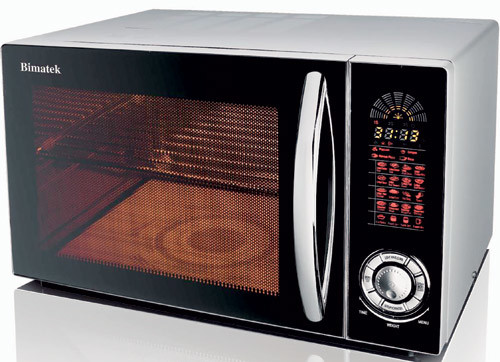 How to choose a microwave
How to choose a microwave
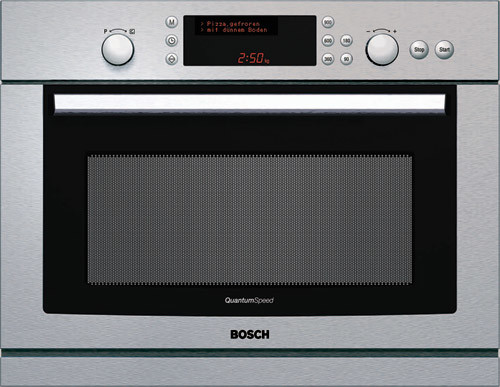
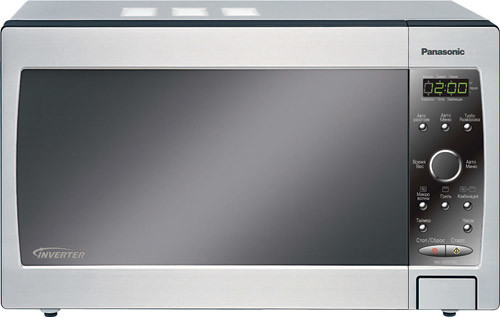 The wide popularity of microwave ovens is explained by the fact thatFirst of all, by their ease of use. Compared to their main competitors, ovens and roasters, they provide maximum ease of use, economy and high speed of heating of products. Not the least role was played by the noticeable reduction in the cost of microwave ovens. Prices for 70-80% of all non-built-in models present on the market do not exceed the amount of 5-6 thousand rubles. The cheapest models can be purchased for 1.5-2 thousand rubles. The prices for the most expensive microwave ovens reach up to 20,000 to 30,000 rubles. As a rule, these are built-in appliances from well-known manufacturers of premium household appliances. Among the companies engaged in the production of microwave ovens, one can note the German BSH Bosch und Siemens Hausgeräte (trademarks Bosch, Gaggenau, Neff, Siemens), Bork and Miele; Electrolux Group (Sweden, trademarks AEG-Electrolux, Electrolux); Korean Daewoo Electronics, Hyundai Electronics (trademark Hyundai), LG Electronics (trademark LG), Samsung Electronics (trademark Samsung); Golder Electronics (Russia, trademark Vitek); Whirlpool (USA); SEB (France, trademark Moulinex); Japanese Matsushita Electric Industrial (trademark Panasonic) and Sharp Electronics (trademark Sharp).
The wide popularity of microwave ovens is explained by the fact thatFirst of all, by their ease of use. Compared to their main competitors, ovens and roasters, they provide maximum ease of use, economy and high speed of heating of products. Not the least role was played by the noticeable reduction in the cost of microwave ovens. Prices for 70-80% of all non-built-in models present on the market do not exceed the amount of 5-6 thousand rubles. The cheapest models can be purchased for 1.5-2 thousand rubles. The prices for the most expensive microwave ovens reach up to 20,000 to 30,000 rubles. As a rule, these are built-in appliances from well-known manufacturers of premium household appliances. Among the companies engaged in the production of microwave ovens, one can note the German BSH Bosch und Siemens Hausgeräte (trademarks Bosch, Gaggenau, Neff, Siemens), Bork and Miele; Electrolux Group (Sweden, trademarks AEG-Electrolux, Electrolux); Korean Daewoo Electronics, Hyundai Electronics (trademark Hyundai), LG Electronics (trademark LG), Samsung Electronics (trademark Samsung); Golder Electronics (Russia, trademark Vitek); Whirlpool (USA); SEB (France, trademark Moulinex); Japanese Matsushita Electric Industrial (trademark Panasonic) and Sharp Electronics (trademark Sharp).
So, actually, we will cook?
When choosing a microwave oven, you need to:First of all, decide how exactly you are going to use it. There are many options for using microwave ovens, but the most widespread are two diametrically opposed approaches. First: the microwave is used exclusively for heating semi-finished and finished products (if you can say so, the "bachelor" option). Second: the oven is actively used for baking, roasting, in other words, it almost completely replaces the oven (a "stove for a housewife"). What is a "light oven" This is the name for devices in which the main heating method (microwave) is supplemented by a powerful halogen heating lamp that emits light similar in spectrum to sunlight. The combined use of all these methods of heat treatment of food allows you to dramatically (several times) speed up the cooking process. For example, the MP-9485SRB model from the SolarDOM (LG) series is capable of cooking dishes four times faster than a conventional convection oven. The speed with which the oven is preheated also testifies to its power - the temperature of the working chamber rises to 320 ° C in just five minutes. A "bachelor's" microwave oven has a minimal set of functions and a simple control system. Since such an oven is usually used to heat up ready-made dishes, its capacity is usually small - for two or three servings (the volume of the working chamber is 15-18 l). Accordingly, the price of such models is also low - within 2,2013.3 thousand rubles.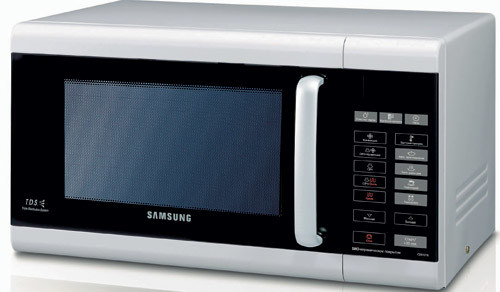
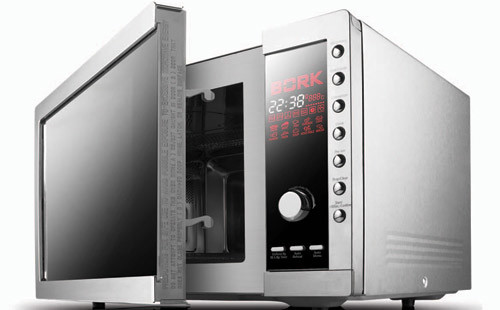

 In defiance of these compact modelsHousehold ovens are comparable in capacity to full-fledged ovens. For example, the volume of the working chamber in the models MCC4060EM (AEG-Electrolux), AMW 545 (Whirlpool) is 40 l, and in the models FQ159ST (Samsung), NN-C2003S (Panasonic) it reaches 42 l. You can easily fit a Christmas turkey in such an oven. The range of possibilities matches the volume. Such devices are often equipped with the widest possible range of functions (for example, a grill and convection), providing all conceivable methods of heat treatment of products. Such multifunctional ovens are usually considered as an adequate replacement for an oven. They are often bought by housewives who are forced to rent housing (after all, high-quality stoves are not available everywhere, and it is not possible to transport your own oven from apartment to apartment). In some cases, a multifunctional microwave oven allows you to completely abandon the oven and limit yourself to just a hob when planning your kitchen. For small kitchens, this means a significant increase in living space. In addition to these two extreme forms, There are many transitional types of microwave ovens, varying in capacity and level of functional equipment. But in any case, when choosing a model, you should ask yourself whether you need to pay extra money for a larger volume and increased power and whether this or that function will be in demand.
In defiance of these compact modelsHousehold ovens are comparable in capacity to full-fledged ovens. For example, the volume of the working chamber in the models MCC4060EM (AEG-Electrolux), AMW 545 (Whirlpool) is 40 l, and in the models FQ159ST (Samsung), NN-C2003S (Panasonic) it reaches 42 l. You can easily fit a Christmas turkey in such an oven. The range of possibilities matches the volume. Such devices are often equipped with the widest possible range of functions (for example, a grill and convection), providing all conceivable methods of heat treatment of products. Such multifunctional ovens are usually considered as an adequate replacement for an oven. They are often bought by housewives who are forced to rent housing (after all, high-quality stoves are not available everywhere, and it is not possible to transport your own oven from apartment to apartment). In some cases, a multifunctional microwave oven allows you to completely abandon the oven and limit yourself to just a hob when planning your kitchen. For small kitchens, this means a significant increase in living space. In addition to these two extreme forms, There are many transitional types of microwave ovens, varying in capacity and level of functional equipment. But in any case, when choosing a model, you should ask yourself whether you need to pay extra money for a larger volume and increased power and whether this or that function will be in demand.
Basics of Culinary Physics
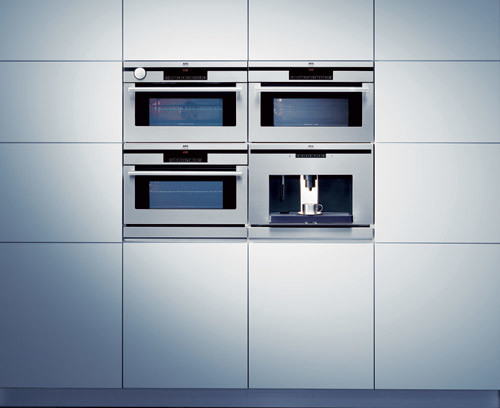 The absolute majority of our fellow citizens have heardWe know that food is heated in microwave ovens using microwaves, but few people have a clear understanding of the physics of this process. That's why we decided to tell you in detail about the operating principle of a microwave oven. Ultra-high-frequency (UHF) radiation is exactly the same oscillations of an electromagnetic field as, for example, visible light or radio waves, but it differs from them in wavelength (from fractions of a millimeter to several tens of centimeters). Microwave ovens use radiation with a wavelength of 12.5 cm and a frequency of 2450 MHz (2.45 billion oscillations per second). The source of microwave radiation in a microwave oven is a special device - a magnetron.
The absolute majority of our fellow citizens have heardWe know that food is heated in microwave ovens using microwaves, but few people have a clear understanding of the physics of this process. That's why we decided to tell you in detail about the operating principle of a microwave oven. Ultra-high-frequency (UHF) radiation is exactly the same oscillations of an electromagnetic field as, for example, visible light or radio waves, but it differs from them in wavelength (from fractions of a millimeter to several tens of centimeters). Microwave ovens use radiation with a wavelength of 12.5 cm and a frequency of 2450 MHz (2.45 billion oscillations per second). The source of microwave radiation in a microwave oven is a special device - a magnetron.


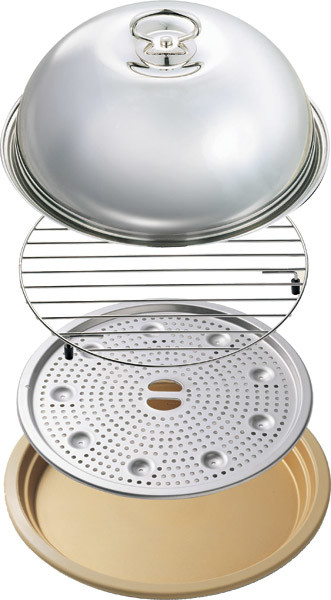 «The warming» effect of microwave waves wasdiscovered by American engineer Percy Spencer during experiments with radar installations, which also used microwave radiation from a magnetron. The discovery, one might say, happened by accident: a chocolate bar that was hit by a magnetron was melted by radiation. It turned out that microwaves are capable of transferring energy to water molecules, which begin to move under the influence of radiation. This is how the product is heated. Microwave radiation in microwave ovens has a noticeable effect on water molecules. Therefore, in order for a body to heat up, it must contain water. It is present in almost all food products. But it is useless to try to heat up, for example, an empty plastic plate with a microwave oven. Microwaves are not able to penetrate the product being cooked to a depth of more than 20133 cm. Heating of deeper layers occurs due to heat transfer from heated areas of the product to colder ones. Thus, a microwave oven is especially effective in cooking small portions of food. If we talk about turkey, for example, the advantage in cooking speed over a conventional oven is unlikely to be fundamental. Only certain materials can be used in a microwave oven. Metal, for example, is impermeable to microwave radiation, so you will have to avoid aluminum pots or cast iron frying pans. Ceramics with a metal coating are also not suitable, for example, porcelain plates with a gold edging (under the influence of microwave radiation, the gold layer begins to sparkle and can heat up so much that the dishes will be ruined).
«The warming» effect of microwave waves wasdiscovered by American engineer Percy Spencer during experiments with radar installations, which also used microwave radiation from a magnetron. The discovery, one might say, happened by accident: a chocolate bar that was hit by a magnetron was melted by radiation. It turned out that microwaves are capable of transferring energy to water molecules, which begin to move under the influence of radiation. This is how the product is heated. Microwave radiation in microwave ovens has a noticeable effect on water molecules. Therefore, in order for a body to heat up, it must contain water. It is present in almost all food products. But it is useless to try to heat up, for example, an empty plastic plate with a microwave oven. Microwaves are not able to penetrate the product being cooked to a depth of more than 20133 cm. Heating of deeper layers occurs due to heat transfer from heated areas of the product to colder ones. Thus, a microwave oven is especially effective in cooking small portions of food. If we talk about turkey, for example, the advantage in cooking speed over a conventional oven is unlikely to be fundamental. Only certain materials can be used in a microwave oven. Metal, for example, is impermeable to microwave radiation, so you will have to avoid aluminum pots or cast iron frying pans. Ceramics with a metal coating are also not suitable, for example, porcelain plates with a gold edging (under the influence of microwave radiation, the gold layer begins to sparkle and can heat up so much that the dishes will be ruined).
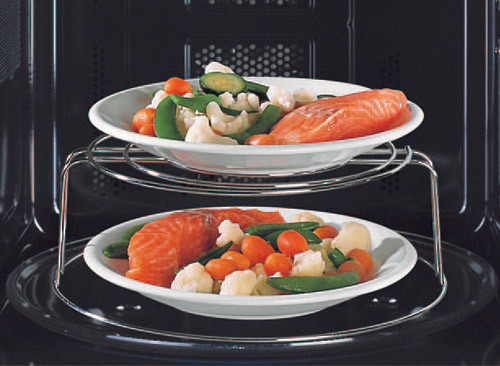

 Is the cookware microwave safe?To answer this question, perform a simple experiment. Place the dish you want to test and a glass half-filled with water in the oven (it is prohibited to turn on the oven without a load). Set the microwave to maximum heating for one minute. Then check the temperature of the tested container. If the dish has heated up, then it is not suitable for the microwave oven. If it has become only slightly warm, you can use it for heating, but not for cooking. If the dish has retained room temperature, then it is suitable for cooking products in the microwave oven.
Is the cookware microwave safe?To answer this question, perform a simple experiment. Place the dish you want to test and a glass half-filled with water in the oven (it is prohibited to turn on the oven without a load). Set the microwave to maximum heating for one minute. Then check the temperature of the tested container. If the dish has heated up, then it is not suitable for the microwave oven. If it has become only slightly warm, you can use it for heating, but not for cooking. If the dish has retained room temperature, then it is suitable for cooking products in the microwave oven.









